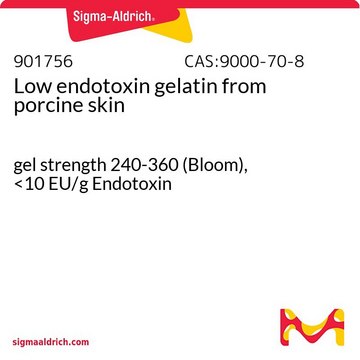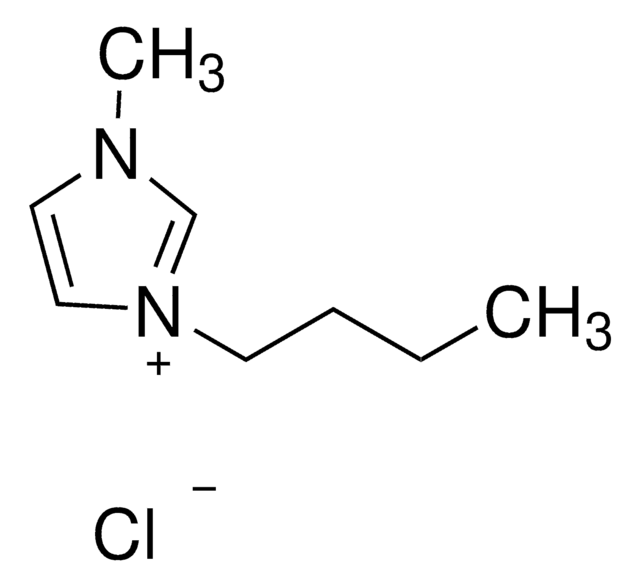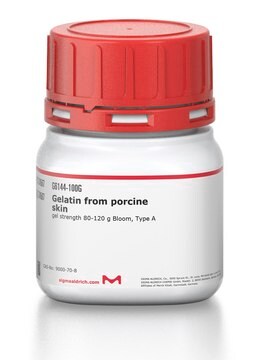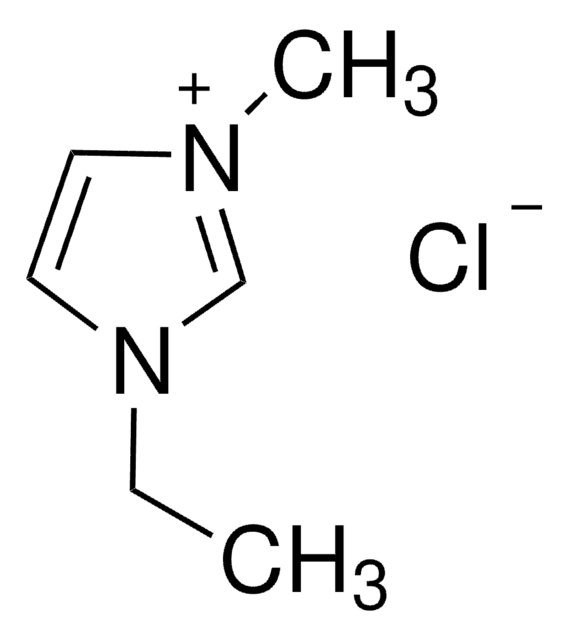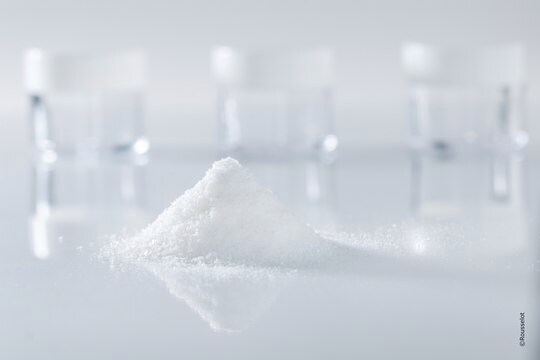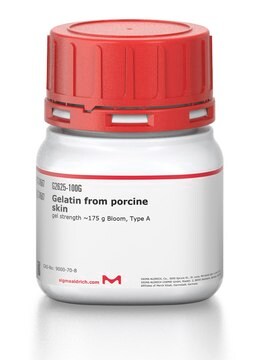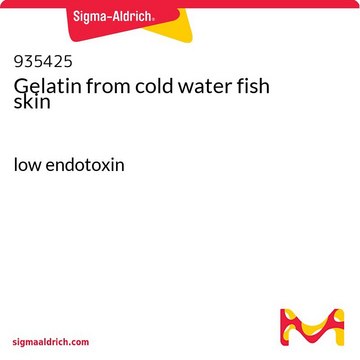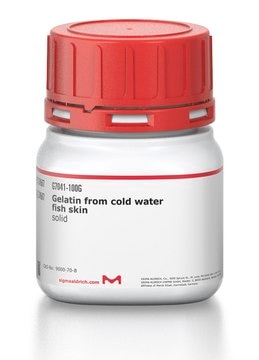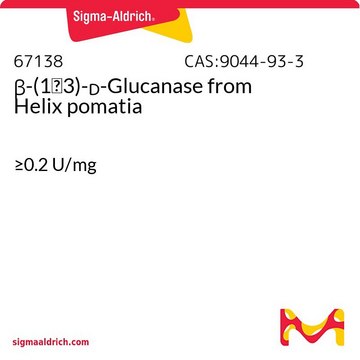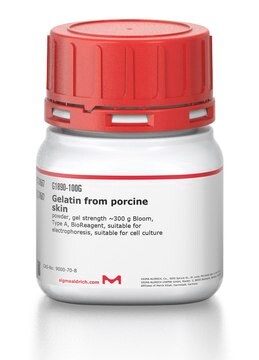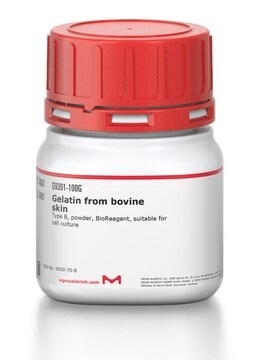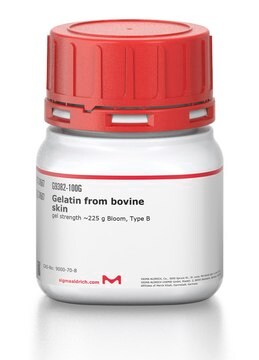推薦產品
形狀
powder
雜質
<10 EU/g Endotoxin
<10 EU/g
<300 g Total viable aerobic count
損耗
<15% loss on drying
顏色
white to pale yellow
pH值
5.0-6.5
黏度
1.8-2.8 mPa.s
凝膠強度
80-120 (bloom)
負離子痕跡
sulfite (SO32-): <1.5 mg/ 20 g
正離子痕跡
As: <1 ppm
Hg: <0.1 ppm
heavy metals: <20 ppm
儲存溫度
2-8°C
尋找類似的產品? 前往 產品比較指南
應用
法律資訊
儲存類別代碼
11 - Combustible Solids
水污染物質分類(WGK)
nwg
閃點(°F)
Not applicable
閃點(°C)
Not applicable
客戶也查看了
文章
Professor Shrike Zhang (Harvard Medical School, USA) discusses advances in 3D-bioprinted tissue models for in vitro drug testing, reviews bioink selections, and provides application examples of 3D bioprinting in tissue model biofabrication.
Professor Shrike Zhang (Harvard Medical School, USA) discusses advances in 3D-bioprinted tissue models for in vitro drug testing, reviews bioink selections, and provides application examples of 3D bioprinting in tissue model biofabrication.
相關內容
Tissue engineering fabricates tissues cultures from scaffolds, living cells, and biologically active molecules by simulating the microenvironment of the body to repair or replace damaged tissue.
Tissue engineering fabricates tissues cultures from scaffolds, living cells, and biologically active molecules by simulating the microenvironment of the body to repair or replace damaged tissue.
我們的科學家團隊在所有研究領域都有豐富的經驗,包括生命科學、材料科學、化學合成、色譜、分析等.
聯絡技術服務